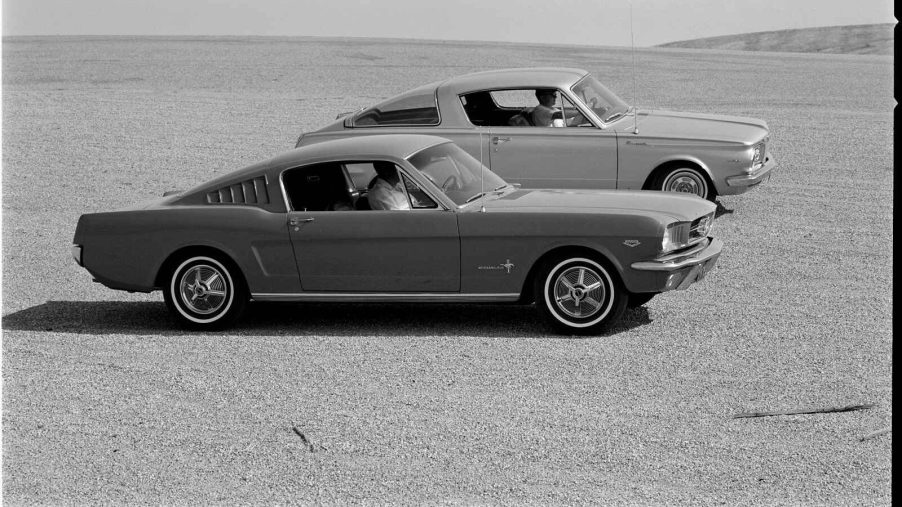
Why Pony Cars Aren’t Called Fish Cars
The term “pony car” refers to sleeker, sportier, and higher-performance compact cars. These are the successors of full-sized midcentury Americana sedans. As the name suggests, it has a parent model: the 1964 Ford Mustang. However, people may not realize that the 1964 Plymouth Barracuda came to market first. Still, we call compact sports cars “ponies” and not “fish.” Why?
In 1963, Ford and Chrysler set steady sights on the same target: smaller, more affordable performance cars ready for mass adoption. Plymouth had been planning a sportier version of its Valient since 1962 but had paused, only to scramble when it caught wind of Ford’s similar initiative. Ford had also been working on a mass-adoptable four-seater sports car. The Falcon would be its base.
Often labeled the ’64 ½ Mustang, Ford missed the October 1963 release of the rest of its ’64 model year lineup. Ultimately, Chrysler would lead to the finish line, putting up the Plymouth Barracuda on April 1, 1964. Ford would roll out the Mustang on April 17, 1964, and nab 20,000 orders on day one. 23,500 Barracudas sold in all of 1964.

Ford cites perfect market conditions for the overwhelming response to the Mustang. The Mustang was launched at the New York World’s Fair when young American drivers wanted something new and exciting and had money to spend. However, there’s more to the story.

Not only was the Barracuda’s aesthetic decidedly hulkier, but its engine options dropped rank after the standard slant six. The Mustang’s output would more than level up over the Barracuda, jumping right from a standard six to the V8 and touting more horsepower at each interval, up to 210. The ’64 Barracuda V8 options tapped out at 180 hp.

While the Barracuda arrived earlier, the spec sheets couldn’t deny hard facts, and it was the pony that came out on top.
Source: MotorTrend





